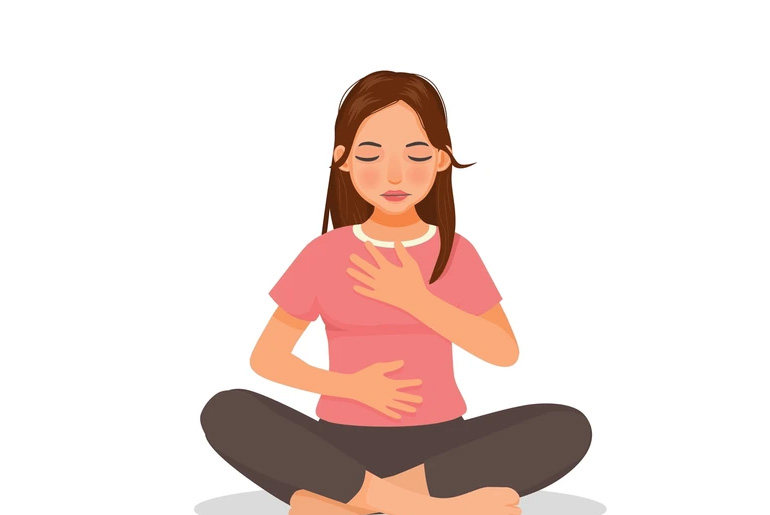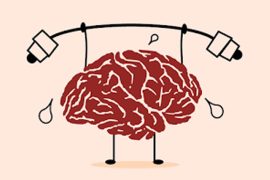Focusing on managing stress is crucial for overall health, even though it might not be as easily quantifiable as other health metrics. Chronic stress has been linked to various health issues such as heart disease, high blood pressure, diabetes, depression, and anxiety. While managing stress can be challenging, deep breathing has emerged as an effective intervention to help improve many chronic health conditions.
Deep breathing should be viewed as a complementary therapy rather than a replacement for conventional treatments recommended by healthcare providers. It’s essential to integrate deep breathing exercises alongside other medical interventions.
The benefits of deep breathing as a complementary therapy. Unlike some treatments, deep breathing exercises have minimal to no side effects and can be practiced at any time of the day. This accessibility empowers individuals to use breathing techniques to reduce stress and enhance focus, contributing to overall well-being.
Exploring How Stress Impacts Disease:
Stress can significantly impact disease progression and overall health. A study from 2013 revealed that approximately 60 to 80 percent of primary care doctor visits are linked to stress, yet only a small fraction of patients receive stress management assistance. The pervasive influence of stress on health conditions. Basically, our nervous system extends to every tissue in the body. If the stress response of our nervous system is heightened, it directly affects every tissue; any preexisting disorder within that organ system can be exacerbated by stress. This underscores the widespread impact of stress on bodily functions and emphasizes the importance of managing stress for overall wellness.
The Power of Deep Breathing Signals to Your Body:
Deep breathing serves as a signal to the body to relax by counteracting the stimulation of the sympathetic nervous system, which is associated with stress-related symptoms such as faster breathing, elevated heart rate, irritability, elevated blood pressure, anxiety, and muscle tension. This physiological response is part of the fight-or-flight response, which deep breathing helps to mitigate.
Engaging in deep breathing involves softening the abdomen, engaging the diaphragm, and taking slow, deliberate breaths to fill the lungs with air. This action slows down the heart rate, reduces blood pressure, and relaxes muscles, promoting a sense of calmness and relaxation.
When you take a deep breath, it triggers the vagus nervous system, a key component of the parasympathetic nervous system responsible for the body’s “rest and digest” activities. Stimulating the parasympathetic nervous system helps initiate a calming response, leading to improved mood, reduced anxiety, and enhanced cognitive function.
Consistency is key when practicing deep breathing, similar to exercise or meditation. While deep breathing can provide immediate benefits in the moment, such as lowering blood pressure and heart rate, regular practice yields the most significant benefits. Regular practice helps the body recognize the deep breathing technique and become more responsive to its calming effects.
Research supports the efficacy of deep breathing for various health conditions, making it a valuable tool for promoting overall well-being and managing stress.
1. Deep Breathing Can Lower Blood Pressure:
Deep breathing can lead to significant reductions in blood pressure, particularly for individuals experiencing anxiety. Individuals can lower their blood pressure by 30 points or more through deep breathing exercises. However, it’s essential to note that blood pressure may increase again when faced with anxiety-provoking situations.
Consistency and regular practice are crucial for achieving lasting health benefits, including those related to blood pressure management. Deep breathing can offer sustained benefits, but maintaining a routine is essential.
A review published in 2019, which analyzed 17 studies, found that slow breathing exercises resulted in small reductions in blood pressure. The authors of the review concluded that breathing exercises could serve as an initial treatment option for individuals with prehypertension or low-risk high blood pressure, especially for those hesitant to take medication.
2. Enhancing Quality of Life for Asthma and COPD Patients:
Deep breathing exercises offer nonpharmaceutical support for individuals with lung conditions like asthma and Chronic Obstructive Pulmonary Disease (COPD), enhancing their management and overall quality of life.
For individuals with mild to moderate asthma, breathing exercises can alleviate hyperventilation symptoms, enhance lung function, and contribute to an improved quality of life. While evidence for directly improving asthma symptoms is limited, these exercises remain beneficial for asthma management.
In COPD pulmonary rehabilitation programs, diaphragmatic breathing is often emphasized to enhance lung efficiency and oxygen levels. This slower, deeper breathing technique engages the diaphragm, improving breathing and overall well-being. When combined with other interventions such as pursed lip breathing and exercise, diaphragmatic breathing can significantly enhance breathing and quality of life for individuals with COPD.
It’s important to note that mastering breathing exercises may require time and practice. Starting slowly and avoiding attempts during moments of breathlessness are advisable strategies recommended by organizations like the American Lung Association. Through consistent practice, individuals with asthma and COPD can integrate deep breathing exercises into their daily routines, effectively managing their conditions and improving their overall quality of life.
3. Strategies to Manage Symptoms of Depression and Anxiety:
Deep breathing exercises can help manage symptoms of depression and anxiety, especially in the face of chronic stress, which has become increasingly prevalent during the COVID-19 pandemic. Chronic stress can disrupt normal breathing patterns, exacerbating anxiety and other mental health conditions.
Mindful breathing exercises can help individuals rebalance their breath system, leading to improvements in mood and cognition. Stress levels can impair cognitive function, making it difficult to think clearly.
A small study published in 2017 demonstrated the effectiveness of belly breathing, or diaphragmatic breathing, in reducing stress hormone cortisol levels and enhancing sustained attention rates. Participants who attended 20 sessions of belly breathing over eight weeks experienced significantly lower cortisol levels and higher sustained attention rates compared to the control group. Overexposure to cortisol and other stress hormones is associated with an increased risk of various health issues, including depression and anxiety.
4. Reduce Tension and Ease Discomfort:
Deep breathing can aid in reducing tension and muscle tightness, which can be beneficial for managing headaches. Calming the sympathetic response through deep breathing helps promote relaxation and decrease muscle tension, particularly in the neck and shoulders. This reduction in muscle tension may alleviate headache pain. Additionally, deep breathing promotes overall relaxation, which can improve sleep quality and contribute to general well-being.
While deep breathing may not provide immediate relief during a headache, incorporating it into a regular practice or using it at the onset of symptoms can be helpful, especially when combined with preventive and acute medication strategies. This underscores the potential of deep breathing as a complementary approach to managing headaches and promoting overall relaxation and well-being.
5. Strategies to Alleviate Symptoms of Irritable Bowel Syndrome:
Deep breathing can offer relief for certain symptoms of Irritable Bowel Syndrome (IBS). The diaphragmatic movements involved in deep breathing can alleviate tension in the digestive tract, potentially easing symptoms of conditions like gastroesophageal reflux disease (GERD), constipation, diarrhea, and urgency.
The potential digestive benefits of deep breathing, noting that tension can disrupt normal digestion processes.
A small study involving adults with IBS, conducted in 2020, revealed that training in progressive muscle relaxation and diaphragmatic breathing resulted in improvements in IBS symptoms, depression, and overall quality of life. This suggests that incorporating deep breathing techniques into a routine may offer relief for individuals with IBS, along with enhancing their overall well-being.
6. Strategies to Reduce Hot Flashes:
Deep, slow breathing, known as paced breathing, at a rate of six to eight breaths per minute, may offer relief for hot flashes, a common symptom of menopause. A study from 2017 found that high levels of cortisol, a stress-related hormone, are associated with hot flashes. Paced breathing can help reduce cortisol levels, potentially alleviating the frequency and severity of hot flashes.
Furthermore, deep breathing exercises are recommended to managing hot flashes, particularly for individuals experiencing them as a side effect of cancer treatments. Incorporating deep breathing techniques into daily practice may help reduce the intensity and occurrence of hot flashes, providing relief for individuals experiencing this symptom.
Disclaimer:
The information contained in this article is for educational and informational purposes only and is not intended as a health advice. We would ask you to consult a qualified professional or medical expert to gain additional knowledge before you choose to consume any product or perform any exercise.






